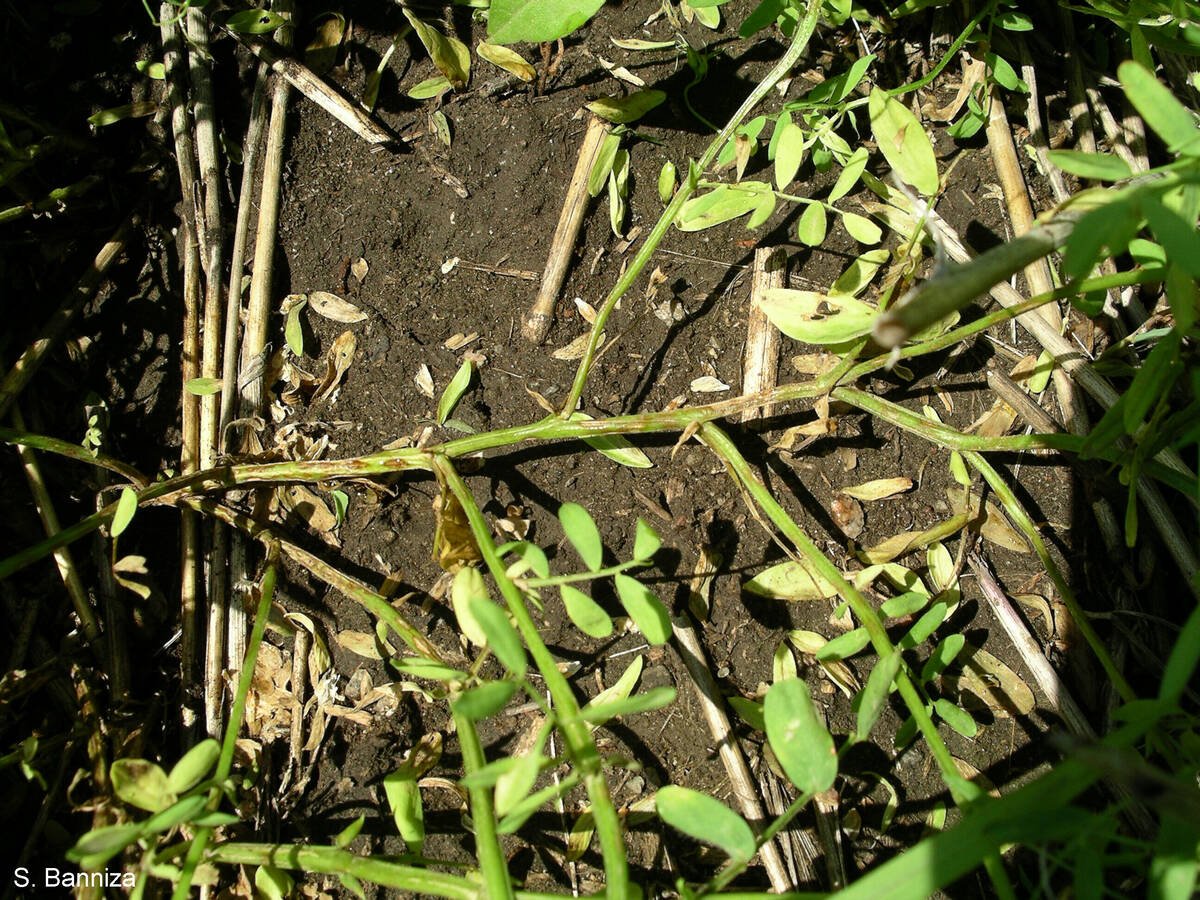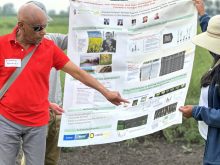McCREARY, Man. – When he’s not fighting crime, rural Manitoba Mountie Bob Gass spends his spare time building in his backyard.
As a boy, Gass came to share his father and grandfather’s passion for tapping maple trees near their New Brunswick home to make maple syrup.
He moved to the Prairies in 1973, believing the typically eastern Canadian tradition was left behind. But when he tried tapping a Manitoba maple, or box-elder, 10 years ago, Gass was pleasantly surprised. Today, he describes his backyard project as one of the first maple sugar shacks in Western Canada.
Read Also

Anthracnose resistant lentils within reach
The risk that anthracnose poses to lentils continues to be high priority for the pulse sector.
If all goes according to plan, he said he’d like to retire from the RCMP in about 10 years and take up his maple syrup business full time.
The new five-metre-high building in the family’s backyard will house a $7,000 large scale evaporator capable of boiling down 300 litres of sap an hour. It’s the only one of its kind in Manitoba and will be ready to go this spring.
Gass has spent eight of his 24 years as an RCMP corporal in McCreary, a community of about 600 people 120 kilometres northeast of Brandon. He started tapping the maples as an experiment, and now it’s a family affair.
Family helps out
“I guess you could say I’m like an apprentice,” said 15-year-old Phillip Gass. He spent many after-school hours in the spring gathering sap and helping his sister, 11-year-old Amanda, haul it into the yard. It was a big job, considering about 40 litres of the watery sap boil down to one litre of sweet, sticky amber syrup.
“When the sap starts running, Bob really needs their help,” said Bob’s wife Betty Ann. “And sometimes the kids’ friends come by to lend a hand.”
Tapping begins when spring temperatures rise above freezing during the day while nights still dip below zero.
With about 1,500 trees to tap on his farm, spring is a hectic time around the Gass house, said Betty Ann, who works as a substitute teacher at the local high school.
“You really have to love doing it because it can be a lot of work.”
Gass syrup is stocked on shelves in health food stores and specialty shops in Winnipeg, Dauphin and Killarney. Gass also sells special packages to government agencies to be used in gift baskets given to visiting dignitaries.
A one-litre jug will fetch $9 in the store, but Gass cautions new enthusiasts to try something else if they’re looking to make a quick buck.
“No one’s going to get rich on maple syrup, but there’s a good return if you’re willing to work at it.”
Gass recently started an association of prairie maple syrup producers. He also distributes maple syrup equipment for two eastern Canadian manufacturers.
“Right now, I know of 150 producers operating more than 50 taps (each),” he said.
Gass hesitated to rekindle his childhood hobby after moving to the Prairies because Manitoba maples are said to produce a lighter tasting syrup than the sugar maples.
But that hesitation disappeared when he came upon a First Nations community near Big Point on Lake Manitoba that was boiling down sap in a large teepee over an open fire.
“He thought ‘If they can do it, so can I’, ” Betty Ann recalls.
Family tradition
Years later, because of their mutual interest, Gass met nearby Kinosota resident Rose Desjarlais. Making maple syrup is a strong tradition in her family, beginning with her great-grandmother. Gass didn’t know it at the time, but it was Desjarlais’s aunt he saw making maple syrup at Big Point 10 years ago.
Off the shore of Lake Manitoba near Kinosota is what locals call Sugar Island, where the tradition began for resident native communities.
“There’s a lot of maple trees there,” Desjarlais said. “My mother’s teepee is still standing there.”
A few years ago, Desjarlais’s husband built a teepee where friends and family gather each spring to boil down sap from 600 nearby maples. They boil the sap in pails hung over an open fire inside the teepee to make enough syrup to share throughout the community.
Her job is to stir the sap and keep the fire going.
“The young people come out and help, too,” said Desjarlais’ sister, Suzette, a resident of the nearby Ebb and Flow reserve.
Gass has been out to the teepee near Kinosota several times. He uses some of his spare time in the fall and winter seasons swapping secrets with Desjarlais in preparation for maple syrup harvests to come.
















